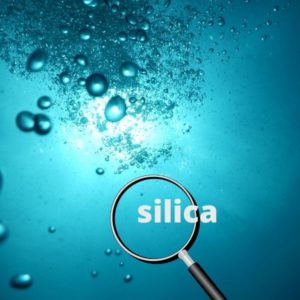4 Effective Ways of Removing Silica From Water
These methods are effective for the removal of silica from the water.
- Lime Softening for Silica Removal
Lime softening is the most common approach for lowering silica levels in the water. To remove silica, you also need to add lime which is calcium hydroxide, to the water supplies.
The addition of lime eliminates the hardness of water by removing both magnesium and calcium carbonate. These two get precipitates, but they decrease the silica content too.
The silica present in water gets attached to calcium carbonate and also magnesium carbonate. When lime causes these two to precipitate, silica in water automatically gets precipitated.
Moreover, you can remove these precipitants later through a variety of methods. But sometimes, it can cause the problem of silica scaling, but overall it is an effective method.
- Ion Exchange for Removing Silicon Dioxide
Ion exchange is also one of the most common methods for producing contaminants-free treated water. Silicon dioxide splits in water and becomes ionic silica. This ion has a negative charge. That is why an anion resin can attract and bind this reactive silica to remove silica particles.
The resin is made of caustic soda (NaOH) and has a strong affinity for silicon. The silica in its ionic form is a weak acid, and sodium hydroxide in the resin completely removes ionic silica. It basically exchanges the hydroxyl part (OH) with silica.
After silica is removed the pH of the treated water increases because of the abundance of hydroxyl ions that are produced. Therefore, you need an additional step to stabilize pH after silica removal.
The ion exchange method is not suitable for residential applications as it uses caustic soda. After every removal cycle, the resin needs to be changed and also washed. This recharging prepares it for the next cycle.
- Ultrafiltration for Removing Colloidal Silica
Ultrafiltration is strictly limited to the removal of colloidal silica. It does not sit well with the presence of reactive silica in water. Moreover, you can get an ultrafiltration stick for determining the type of silica in water. Ultrafiltration uses filters of very small pore sizes that can remove silica easily.
If your water supply has granular silicates and dissolved silica, apply ultrafiltration to remove colloidal silica.
- Electrocoagulation
Electrocoagulation is a rather new technology fitted for purifying water for industrial applications. In addition to silica, this method effectively removes hard mineral deposits, plastic impurities, etc.
There is an electrocoagulation chamber in which the impure water is introduced. This chamber has two parallel plates for passing the electricity through water. The water is dispersed as it moves through both of these plates. And the electricity separates all contaminants from water.
The electricity charges the contaminants and causes them to separate. This technique is also economically effective as it treats the water in one go.
What Is Silica?

Silica or SiO2 is a naturally occurring crystalline compound in the sand, most rocks, and minerals. It is made of silicon and oxygen and is also an extremely common constituent of sand. Silicon is the second most abundant element in the crust of the earth.
It is naturally present in the form of quartz mostly. But due to its crystalline nature, it is dissolved in surface water as well. Silicon is colorless normally, but other impurities give color to it. It forms hard layers of minerals on the surface, these are known as scale deposits.
Source of Silica Contamination
Silica contaminates the water from many sources. It comes from glass, ceramics, foundries, and also many other chemical industries.
The glass industry contributes to silica contamination more than others. Their wastewater contains residual silica.
The rainwater also washes the silica away off the rocks and adds it to surface water.
Construction work is another source of contamination of water. The mining work adds silica dust to the water.
Many food and pharmaceutical industries also use silica and add it to water. The beer and wine industry uses silica in the fining method. The residual from all industries also gets added to water.
The Symptoms and Dangers of Silica

People who work at mines or glass industries are at constant risk of inhaling silica dust. This silica dust is highly hazardous for the lungs. And causes a disease called silicosis. It permanently damages the lungs. You feel shortness of breath and suffocation. Other symptoms of silica toxicity are difficulty breathing and permanent coughing.
Silica can lead to lung cancer too. Other diseases caused by silica are COPD (Chronic obstructive pulmonary disease) and kidney disease. The buildup of crystalline silica in the body causes kidney diseases and autoimmune problems like systemic lupus erythematosus, rheumatoid arthritis, and scleroderma or systemic sclerosis.
Silica contamination is harmful to boilers and water pipes as well. It causes deposits of hard minerals on these surfaces, which cause problems in the functioning of boilers. This problem reduces the efficiency of power plants too.
The contaminated water will cause silica buildup on the toilet and shower doors. This deposit is very hard to remove and looks ugly.
Silica is very dangerous for human health and harmful for boilers and pipes.
Does Water Filter Remove Silica?
Reverse osmosis systems are highly efficient for removing silica. The filters that operate reverse osmosis systems can remove silica through a semipermeable membrane.
In addition to RO filters, ultrafiltration system filters can also remove silica. So the answer is yes! Either it is dissolved or reactive silica, water filters can remove both forms. Water filters pass the water at a defined pressure range to separate silicon particles through the membrane.
Which Water Filters Remove Silica?
- Whole House Water Filter
The whole house water filter can provide clean and pure water to the whole house. It can filter any impurities from a huge supply of water at a time. Many colorless and odorless contaminants enter the house water supply, which is harmful to washing and bathing. The whole house water filter purifies the water for washing and drinking.
They have a reverse osmosis system along with other filters. The best feature of whole house water filters is that they have activated carbon filters to pre-treatment the water. You should get a filter that can manage the gallons of water you need daily. So a good filter has a big capacity for filtering the water.
The sediment filter for prefiltering the water aids in the removal of silica. At the same time, the reverse osmosis membrane separates the reactive silicon particles from the water. The whole house water filter has many benefits for residential use.
- Backpacking Water Filter
Backpacking water filters come in handy when you are out camping and picnicking. They help you filter a small amount of water at the site. The lakes and such water sources have a high amount of silica coming directly from rocks. That is why backpacking water filters help provide purified water outside.
These filters are sufficient for the use of a person. These filters are long-lasting and sometimes are good for a lifetime.
- Countertop Water Filter
Countertop water filters work correctly with kitchen use. As you need silicon-free water for drinking, these filters are the best for you. This water filter is of many types, including water ionizer and water distiller. An ionizer countertop water filter will be the best to remove silica from water.
You can get a countertop water filter that uses reverse osmosis to remove silicon dioxide. There is a huge variety of countertop water filters. They can filter almost 10000 gallons of water and are good-to-go for 7-10 years.
- Reverse Osmosis Water Filters
If you want the best efficient water filter, reverse osmosis water filters should be your priority. They remove all kinds of contaminants due to the efficiency of a semi-permeable membrane. These RO water systems remove almost 99% of contaminants and prevent the entry of acidic water.
FAQs on How to Remove Silica From Water?
How do I know if my house is contaminated with silica?
The water contaminated with silica covers the surfaces of metal pipes or geysers. The silica scales will be visible through the house, and the water will taste harsh and bitter.
Does boiling water remove silica?
No! You cannot remove silica through a simple boiling method. It is a strong element and needs rigorous physical methods like ion-exchange and reverse osmosis to remove silica particles.
Does Water softener remove silica?
A water softener can remove hard metals but fails when it comes to silicon dioxide. Even a top water softening system would be ineffective against silica.
Conclusion
We have done our best to enlighten you about removing silica from water in this article. You need to remove silica because of the hazards it creates for health. These methods and filters will help you have pure water free of silica. If you have any queries, please mention them in the comments.
